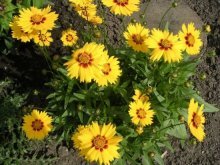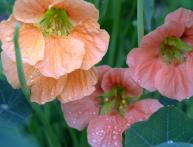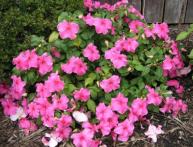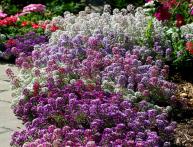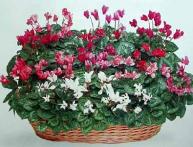Coreopsis: planting and caring for perennials
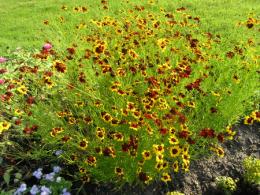
Coreopsis is a perennial. It stands out with its bright, original flowers. There are many varieties of this plant. Many gardeners call coreopsis the sun in their summer cottage, landing and caring for it have some features that should be taken into account so that the plant develops normally.
Content:
- Description of perennial
- Planting and care
- How is the plant propagated?
- Pests and diseases of coreopsis
Description of perennial
Coreopsis brightens the garden with its colorful flowers. Their edges can be painted in the following colors:
- Pink
- Yellow
- Yellow-brown
In the middle of the flower, tubular inflorescences are formed, which have a brownish tint. In rare cases, they turn yellow. This perennial is often popularly called brown-glazed; this name is associated with the color of the central part of the flower. There are many varieties of coreopsis, but their characteristics are quite similar to each other. The most common type of this plant is called Grandiflora.
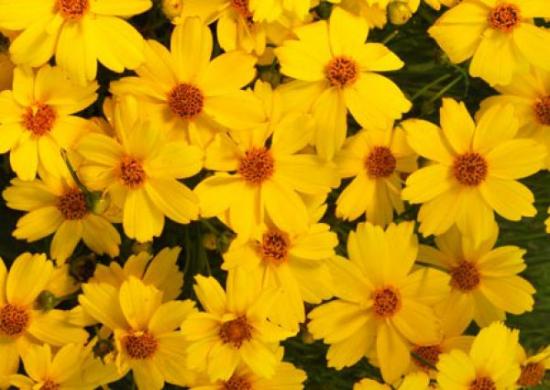
Coreopsis is perennial, therefore it is often planted in summer cottages, as it becomes an original decoration in the garden. This plant easily tolerates drought and cold winters. The flower does not need special care, so it is recommended to grow it for those people who do not have much experience in gardening or time to care for flowers.
Planting and care
You should know about some features of growing perennials.To plant coreopsis, you should prepare loose soil, and do not forget about the drainage system. When a flower is planted, a certain distance between plants should be maintained. It should be about 30 centimeters. This planting improves the flowering of coreopsis. In order for the plant to develop well, you need to prepare the soil for planting. To do this, it is carefully fertilized with organic matter. You need to take time to choose a landing site. An area that is well lit by the sun is ideal for coreopsis. This is due to the fact that the plant loves light. No special knowledge is required to plant this flower. It takes root easily after planting in open ground.
For those people who decide to decorate their plot with coreopsis, you should know some rules for caring for the plant. Experienced gardeners advise rarely watering. This should be done when the weather is dry and there is no rain. Therefore, watering will be rare, since the plant has enough moisture provided by precipitation. Coreopsis also does not need frequent feeding. The soil is fertilized only when the plant is grown on infertile land. Feeding is often carried out at the end of spring or at the beginning of summer. Complex mineral fertilizers are suitable for this.
Video about the coreopsis plant:
If a person decides to grow a tall variety, then he should provide support for it. This will help support the plant and prevent branches from breaking. Low-growing flowers do not need such support. After the plant completes bloom, the height of coreopsis should be reduced. You need to remove about 25%. When pruning has been carried out, you need to fertilize the soil.This will strengthen the plant and extend the flowering period. Before the start of winter, coreopsis should be trimmed to the very base. If the plant is grown in places where winters are not harsh, then it will do without shelter. But if the climate is too cold in winter, then the plant needs additional insulation. To do this, after pruning, it is enough to cover the coreopsis with soil.
How is the plant propagated?
The method of propagation will depend on which plant variety was chosen. Often, dividing the bush is used for this. It should be carried out in the spring or autumn. If growing in a cold region, then it is recommended to carry out this procedure in the spring. Namely, when the weather is already warm enough. But in regions where winters are not severe, the plant can be propagated in the autumn.
There are species of coreopsis for which propagation is carried out using cuttings. You can also grow coreopsis from seeds. However, this is not a complicated procedure.
If a person decides to grow coreopsis from seeds, then he should start planting at the end of May. The plant will bloom only next year. You can also cheat a little. To do this, planting initially takes place indoors in March. When the weather stabilizes, the plant is planted in open ground. In this situation, flowers will appear in the summer.
Pests and diseases of coreopsis
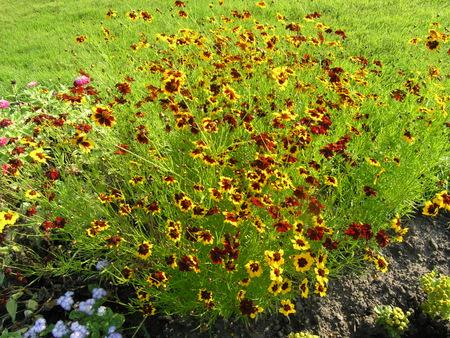
Coreopsis can also suffer from pests and diseases. This often shows up on the plant's foliage, which develops spots and rust. Fungal diseases can provoke such a manifestation. If such a problem occurs, all affected foliage should be removed. Creopsis can also be attacked by viruses.If this happens, then the leaves will curl into a tube. Often the foliage at the top of the plant is affected. If such a problem occurs, then you need to destroy the entire plant that is sick so that the disease does not spread to healthy bushes.
Creopsis can often be attacked by aphids. To get rid of it, you should go to a specialized store where you need to purchase insecticides. There are also other beetles in nature -pests, which can appear on flowers and destroy them. If they are noticed on the site, they should be collected and taken outside the garden. So, the perennial, called coreopsis, does not require special care, but this plant can become a real decoration for the garden. It is easy to plant and easy to care for.
Interesting information about the vegetable garden


